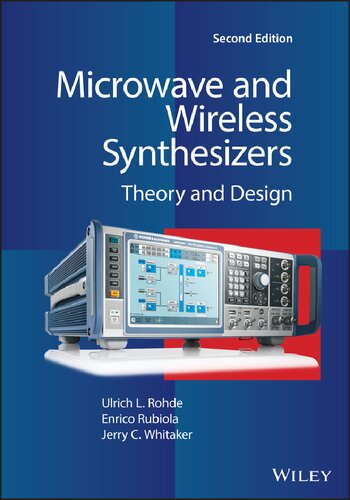

Most ebook files are in PDF format, so you can easily read them using various software such as Foxit Reader or directly on the Google Chrome browser.
Some ebook files are released by publishers in other formats such as .awz, .mobi, .epub, .fb2, etc. You may need to install specific software to read these formats on mobile/PC, such as Calibre.
Please read the tutorial at this link: https://ebookbell.com/faq
We offer FREE conversion to the popular formats you request; however, this may take some time. Therefore, right after payment, please email us, and we will try to provide the service as quickly as possible.
For some exceptional file formats or broken links (if any), please refrain from opening any disputes. Instead, email us first, and we will try to assist within a maximum of 6 hours.
EbookBell Team

4.7
46 reviewsThe second edition includes extensively revised content throughout, including a modern approach to dealing with the noise and spurious response of loops and updated material on digital signal processing and architectures. Reflecting today's technology, new practical and validated examples cover a combination of analog and digital synthesizers and hybrid systems. Enhanced and expanded chapters discuss implementations of direct digital synthesis (DDS) architectures, the voltage-controlled oscillator (VCO), crystal and other high-Q based oscillators, arbitrary waveform generation, vector signal generation, and other current tools and techniques. Now requiring no additional literature to be useful, this comprehensive, one-stop resource:
- Provides a fully reviewed, updated, and enhanced presentation of microwave and wireless synthesizers
- Presents a clear mathematical method for designing oscillators for best noise performance at both RF and microwave frequencies
- Contains new illustrations, figures, diagrams, and examples
- Includes extensive appendices to aid in calculating phase noise in free-running oscillators, designing VHF and UHF oscillators with CAD software, using state-of-the-art synthesizer chips, and generating millimeter wave frequencies using the delay line principle
-new illustrations, figures, diagrams, and examples
Includes extensive appendices